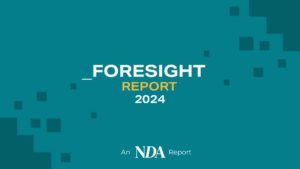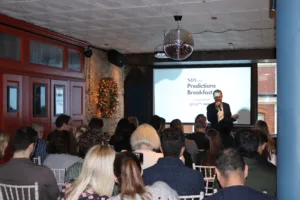By Xandr
Do you remember traditional blog posts where you would diligently go on each website to check for updates? Then when Instagram and other sites like Pinterest emerged, all blog authors shifted most of their content to these platforms. As a reader it was a revelation. Suddenly, within one touch of a button you could instantly access all the posts you wanted, and even discover new ones.
This was one of the first examples of a curated marketplace and it would not be the last. Netflix, Spotify, Apple News and Amazon all burst onto the scene, and successfully engaged with their consumers by supplying easy and quick access to everything consumers thought they needed.
Could the same dynamic be used in the programmatic industry to save time and effort to find the right inventory, the right audience, or even buy within a qualitative supply chain? First, we need to explore the programmatic industry.
The programmatic landscape
With the rapid growth of the programmatic industry, the supply chain has grown in complexity. This is due to the overabundance of both inventory and available formats. To overcome this difficulty and provide enhanced brand-safety, initiatives like ads.txt or sellers.json have been put in place. However, they alone are not enough to reassure buyers they are purchasing premium inventory.
Setting up deals directly with publishers can help increase trust for buyers. However, it becomes trickier and time consuming when you need to request deals for every campaign and even more so if it is across multiple demand-side platforms (DSPs). Imagine you needed to buy a new shirt or pair of jeans every time you go out. Not only would it be time consuming, but also unsustainable. Instead, we usually have a wardrobe with stocked clothing to pick out the clothes we want, when we want them. Imagine applying this in a programmatic supply chain; if a buyer could get access to a “wardrobe” of deals all the time, for all campaigns and any DSP, the process would be more efficient. In this case, curated marketplaces are the wardrobe of programmatic.
What is a curated marketplace?
Marketplaces are not a new concept for the advertising industry, but curated marketplaces are. Curated marketplaces enable buyers, sellers, or third parties to implement their supply strategies and leverage their core assets within a broad ad exchange, effectively providing the opportunity to build a private supply-side platform (SSP).
Within a curated deal, a curator – the company which has designed, built, and operates a curated marketplace – gives a trader access to specific parts of their marketplace rather than the entire shop. For a trader, this looks like a regular deal in their DSP, and they manage and target it in the same way they usually would. Buyers are still purchasing inventory from the seller, but a curator is acting as a facilitator for the transaction.
Can curated marketplaces support new industry initiatives tackling the loss of the third-party cookie?
The deprecation of third-party cookies enhances buyers’ conundrum of reaching the right audiences at scale in brand-safe environments. The industry has seen the emergence of a multitude of identity solutions to tackle this challenge, including contextual targeting, first-party data, publisher data or industry identifiers. Now there is a need to find a hybrid solution able to leverage each of them, and curated marketplaces are a great option.
Curated marketplaces have appeared as the vehicle to continue programmatic’s evolution while addressing increased complexities as they make it possible for market participants to easily build programmatic supply solutions with a broad array of features that combine high-quality inventory, new levels of transparency, and valuable audience and contexts at scale. Importantly, by choosing to operate their own curated marketplace, curators can take control of which sellers and supply paths they want to work with and build relationships for the future.
Xandr is a client of Bluestripe Communications, owned by Bluestripe Group, the owner of NDA









